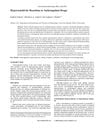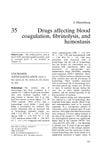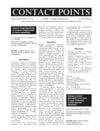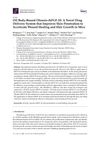Hypersensitivity Reactions to Anticoagulant Drugs: Diagnosis and Management Options
October 2006
in “
Allergy
”
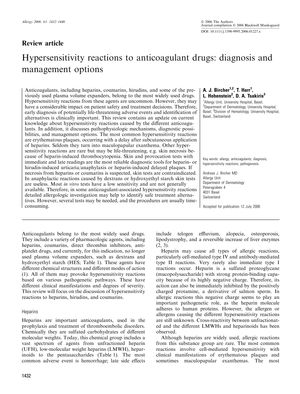
TLDR Allergic reactions to blood thinners are rare but can be serious, requiring careful testing and alternative treatments.
The 2006 document reviews hypersensitivity reactions to anticoagulant drugs, such as heparins, hirudins, and coumarins, noting that while these reactions are rare, they can significantly impact patient safety and treatment. It reports that anaphylaxis to hirudins is very rare, occurring in 0.015% of first-exposed patients and 0.16% of re-exposed patients, with some cases being fatal. Skin necrosis is a rare complication of coumarins, mainly affecting obese women over 50 years old, with a prevalence of 0.01-0.1%. Diagnostic procedures include skin tests and subcutaneous provocation tests, but in vitro tests like the lymphocyte transformation test are rarely positive. For heparin-induced thrombocytopenia II (HIT II), specialized tests are available. Cross-reactivity among heparins is common in HIT II, but alternatives like hirudins, danaparoid, and fondaparinux are available, with fondaparinux being a recommended alternative despite some reported cross-reactivity. The document emphasizes the importance of a differentiated approach to diagnosis and management, allowing for the identification of safe treatment alternatives for patients with anticoagulant hypersensitivity.
